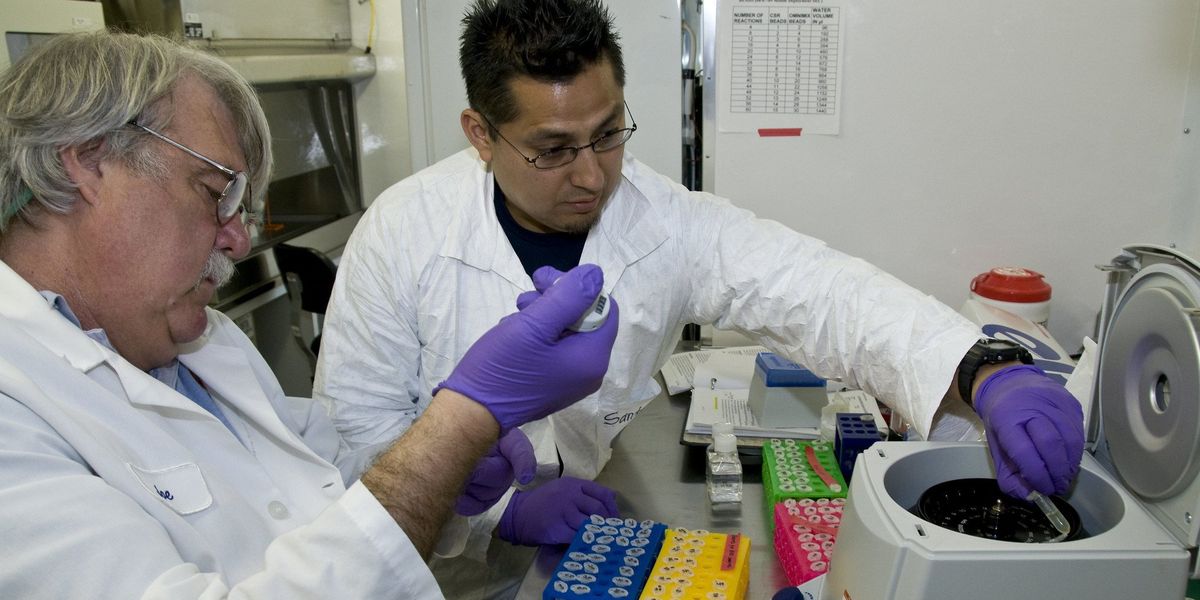
The U.S. Food and Drug Administration (FDA) and the European Food Safety Authority (EFSA) are two major global agencies in charge of food chemical safety.
It is common to hear that food chemical regulations in the EU are more protective of human health than in the U.S. The latest example is the recent ban of four food additives in California. The state’s Governor, Gavin Newsom, noted that the chemicals were already banned in the EU, implying that the lack of action by the FDA was putting the health of Californians at risk.
We examined the FDA and EFSA’s responsibilities on food chemical safety to better understand why EFSA decisions are in general more protective of health. We specifically looked at the agencies’ approach to the safety of bisphenol-A (BPA) as an example of disparate decision-making.
We found that in the EU the risk assessment and risk management of food chemicals are made by different entities: EFSA focuses on science and the European Commission decides on how the risk is managed. EFSA is independent to follow the science on BPA, for example, which resulted in three risk assessments with the last one showing greater harm to human health. In contrast, the FDA conducts both risk assessment and management and it is unclear how decisions are made. Over the years, the FDA has reviewed BPA studies but continued to maintain that its uses are safe.
As the FDA undergoes a reorganization, the agency has a prime opportunity to increase transparency, collaborations and update its approach to evaluating food chemical safety.
Separation of risk assessment and management
Both in the EU and the U.S., the safety of chemicals allowed in food is based on the chemical’s inherent hazard and the level of exposure. If the risk is such that public health must be protected, a risk management decision is made, often via regulation. These decisions could range from banning chemicals to establishing a consumption level that would not increase health risks.
“EFSA focuses on science and the European Commission decides on how the risk is managed … In contrast, the FDA conducts both risk assessment and management and it is unclear how decisions are made.”
In the EU, the risk assessment and the risk management decisions are made by different entities. EFSA conducts risk assessments and the European Commission then makes the risk management decision based on EFSA’s findings. This separation allows the risk assessment to be grounded in science and the risk management to consider not only the science but also social, political, technological and economic factors, as well as the precautionary principle.
In the U.S., the FDA conducts both risk assessment and management.
Striking differences in assessing and managing risk

The EFSA relies on scientific panels composed of independent experts with high standards to limit conflicts of interest and bias. There are ten permanent panels and a scientific committee that supports their work. The scientific opinions are often unanimous, but when they’re not, minority reports are published in the EFSA Journal and also inform the European Commission’s risk management decisions.
Unlike the EFSA, FDA staff review safety assessment and information provided by manufacturers. In a safety assessment there usually are four sections: toxicology, chemistry, environmental impact and policy; but it is unclear whether there is an epidemiologist among the reviewers.
One FDA staff member from each section writes a memo with a summary of information and the conclusions. These memos inform the risk management decision about the use of a substance. The scientific evaluation is not always publicly available. It is also unclear how and by whom risk management decisions are made and whether the risk assessors are also involved in risk management.
Prioritization of chemicals for reassessment
The EFSA is mandated by law to re-evaluate all food additives authorized for use before 2009. The EFSA also identifies emerging risks and collects data about things like consumption, exposure and biological risk and responds to similar requests from member states.
In the U.S., there is no legal mandate for the FDA to re-evaluate the use of the approximately 10,000 chemicals allowed in food, many of them authorized decades ago with little or no safety data. It is unclear if there is a process to identify emerging risks. The first reevaluation of chemicals was in response to President Nixon’s 1969 directive to reassess hundreds of substances the FDA determined to be generally recognized as safe. Only recently, the FDA took the initiative to re-evaluate the safety of partially-hydrogenated oil, Irgafos 168 and brominated vegetable oil. Other reevaluations have been in response to petitions from public interest organizations.
BPA: A tale of two agencies
The risk assessment of BPA — which has been linked to myriad health problems including cancer, diabetes, obesity, reproductive, immune system and nervous and behavioral problems — in food-contact materials is a good example of how two science-based agencies have made very different risk management decisions.
EFSA conducted risk assessments of BPA in 2006, 2015 and 2023, each time at the request of the European Commission in response to new science. The second and third re-evaluations resulted in reductions in the daily allowed exposure of BPA due to new evidence showing greater harm to human health. To complete the process, the Commission recently published its proposed regulation of BPA, which includes a ban of most common uses in polycarbonate plastic and metal can coating.
The FDA assessment of BPA has been riddled with missteps and lack of transparency. The FDA approved BPA for use in food contact applications in the early 1960s. It didn’t a draft safety assessment until 2008, at the request of its commissioner in light of findings by the National Toxicology Program and ongoing evaluations in Europe. FDA then asked its Science Board to review the draft and establish a subcommittee; there was also a public meeting and a report.
The subcommittee, which included some members of the board and external experts, had several concerns about FDA’s assessment. In 2014, the FDA published a memo summarizing an updated safety assessment of BPA. The five-page memo cites the toxicology evaluation conducted in previous years and exposure assessment using an unpublished model. The agency concluded that the estimated consumption amount of BPA was safe to protect children and adults. This was the FDA’s last safety assessment. Unlike the EFSA, the FDA process is less structured and open.
At the FDA “it is also unclear how and by whom risk management decisions are made and whether the risk assessors are also involved in risk management.”
The FDA has conducted its own studies on BPA at different life stages and in different species. The agency was a member of the Consortium Linking Academic and Regulatory Insights on BPA Toxicity (CLARITY-BPA). Launched in 2012 by the National Institute of Environmental Health Sciences, the National Toxicology Program and the FDA, the aim of CLARITY was to combine a traditional regulatory toxicology study from the government and investigational studies from academics who wield more modern techniques. As part of CLARITY, the FDA also conducted a two-year guideline compliant study on BPA toxicity.
In 2018, FDA concluded that “currently authorized uses of BPA continue to be safe for consumers.” This statement was based on the results of only the first year of the CLARITY two-year study conducted by FDA according to its toxicity guideline and did not include analysis of data produced by the multiple academic laboratories involved in the project. Furthermore, it was not based on an assessment of risk which also necessitates exposure data.
Meanwhile, the results of CLARITY, including the academic studies largely ignored by the FDA, played an important role in EFSA’s latest BPA risk assessment.
Unlike EFSA, the FDA has not made public the criteria applied to select the data, to evaluate and appraise the studies included in the hazard assessment, or the weight of evidence methodology used in its current reassessment of BPA. The lack of transparency was a concern previously expressed by FDA’s Science Board subcommittee in 2008.
A “deep misunderstanding” of the risk assessment and management distinction

EFSA’s independence from risk management decisions and recruitment of independent experts to conduct risk assessments gives the agency the freedom to follow the science. By comparison, the FDA has stagnated.
One explanation for such a difference would be FDA’s strong adherence to its historical decisions, rather than considering more recent science. This bias toward their own work is not conducive to change.
Another explanation would be FDA scientists conflating risk assessment and risk management. In 2013, the FDA conducted a review of its chemical safety program and an external consultant noted that there appeared to be a “deep misunderstanding of the risk assessment – risk management distinction” among the staff. This observation is apparent in a commentary in Nature in 2010, where FDA toxicologists said that dismissing “out of hand” risk management factors such as economics, benefits of existing technologies, cost of replacing banned technologies and the toxic risk of any replacement “is, to say the least, insular, and surely imprudent in a regulatory setting.”
The consultant added that FDA staff suggested that the agency “should not be too quick to adopt new scientific approaches.” Such an approach has likely deterred its scientists from acting on new evidence.
FDA is undergoing a reorganization, including the creation of a new Human Food Program. Almost a year ago, the agency announced it was “embarking on a more modernized, systematic reassessment of chemicals with a focus on post-market review.” For this to be successful, the FDA should adopt updated processes and methods, include outside experts when it encounters challenging scientific or technical issues, increase collaboration with other agencies, and engage with stakeholders including consumers, academic institutions, public interest organizations and industry.
But above all, the FDA must restore the public’s trust in the agency with a strong commitment to transparency in decision-making and clear separation between risk assessment and risk management.
For more information check these summary tables.

